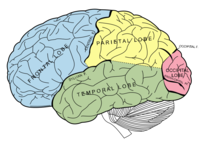A Possible New Treatment for Attention Deficit Disorder

Although I am always eager to use non-pharmacological treatments whenever possible, sometimes it just isn’t possible to us them on their own. I’ve outlined some of the reasons for treating attention deficit disorder (ADD) in a previous post.
We should soon hear whether the regulatory authorities in the United States and Europe are going to approve a medicine – guanfacine – that we currently use for treating high blood pressure, for the treatment of ADD. In the United States it is currently sold under the trade name Tenex. The medicine works in the brain by modulating a population of receptors known as the central nervous system α-2 adrenergic receptors, which results in reduced sympathetic outflow leading to reduced vascular tone. Its adverse reactions include dry mouth, sedation, and constipation.
The idea of using a medicine like this for treating ADD is not new. Fifteen years ago researchers showed that receptor agonists like clonidine decreased distractibility in aged monkeys. And clonidine itself has occasionally been used for treating ADD for over twenty years.
Guanfacine seems to have some unique properties including decreasing the activity in the caudate nucleus while increasing frontal cortical activity. We would therefore expect it not only to help with ADD symptoms, but it may have some quite specific properties relating to learning new material. A key point is that if approved it will only be the second nonstimulant medicine for ADD, along with atomoxetine (Strattera). Many clinicians have had a lot of trouble with side effects of atomoxetine, particularly if it is used in adult men. So if guanfacine is approved, and if it does not have the same side effects, that would be a big bonus.
New options are always welcome, but it remains important for any new pharmacological treatment to be nested in an Integrated approach, which always includes nutrition, physical and cognitive exercises, psychological and social help, as well as attending to the subtle and spiritual aspects of the problem.
And ADD can be a very big problem, despite the protestations from people who claim that it is a non-disease dreamed up by pharmaceutical companies. Our interest is not just professional, but personal. Every single day we see what can happen if someone forgets their medicine.
If the FDA gives approval for guanfacine I shall immediately report it for you, as well as giving you details of all the safety and tolerability data.
Hormones, Addictions and Mood

People working with mental illness have been for years now been puzzled by two observations. The first is that mood disorders and schizophrenia follow quite different trajectories in men and women. Women tend to be more vulnerable to mood disorders and if they get schizophrenia it tends to be less severe and to have fewer “negative” symptoms, such as flat, blunted or constricted affect and emotion, poverty of speech and lack of motivation until after menopause. We have looked at some of the reasons for the different rates of mood disorder, in terms of relationships and social pressures, but there must also be a biological component. The second puzzle is that women are more vulnerable to addictive drugs in the days before they ovulate.
New research published in the Proceedings of the National Academy of Sciences may provide part of the answer to both puzzles.
Colleagues at the National Institute of Mental Health (NIMH), a component of the National Institutes of Health (NIH), have conducted a fascinating imaging study that has shown that fluctuations in levels of sex hormones during women’s menstrual cycles affect the responsiveness of the reward systems in the brain.
The reward system circuits include the:
- Prefrontal cortex, which has key roles in thinking, planning and in the control of our emotions and impulses
- Amygdala, which is involved in rapid and intense emotional reactions and the formation of emotional memories
- Hippocampus, which is involved in learning, memory and navigation
- Striatum that relays signals from these areas to the cerebral cortex
It has been known for some time that neurons in the reward circuits are rich in estrogen and progesterone receptors. However, how these hormones influence reward circuit activity in humans has remained unclear.
The researchers used functional magnetic resonance (fMRI) imaging to examine brain activity of 13 women and 13 men while they performed a task that involved simulated slot machines. The women were scanned while they did the task, both before and after ovulation.
When anticipating a reward, in the pre-ovulation phase of their menstrual cycles the women showed more activity in the amygdala and frontal cortex. When women were actually winning prizes, their reward systems were more active if they were in the phase of their menstrual cycle preceding ovulation. This phase of the cycle is dominated by estrogen, compared to postovulatory phase when estrogen and progesterone are both present. When winning, the main systems that became active were in the parts of the brain involved in pleasure and reward.
The researchers also demonstrated that the reward-related brain activity was directly linked to levels of sex hormones. Activity in the amygdala and hippocampus was in directly linked to estrogen levels, regardless of where a woman was in her cycle. When women won prizes during the post-ovulatory phase of the cycle, progesterone modulated the effect of estrogen on the reward circuit.
Men showed a different activation profile from women during both anticipation and delivery of rewards. Men had more activity in the striatum during anticipation compared with women. On the other hand, women had more activity in a frontal cortex when they won prizes.
This research could have a number of important implications. The most obvious is that it confirms what many women know already: they are more likely to take addictive substances or to engage in pleasurable – but perhaps impulsive or risky – behaviors just before they ovulate.
It is not difficult to imagine why this might have developed during evolution.
“Coming to terms with the rhythms of women’s lives means coming to terms with life itself, accepting the imperatives of the body rather than the imperatives of an artificial, man-made, perhaps transcendentally beautiful civilization. Emphasis on the male work-rhythm is an emphasis on infinite possibilities; emphasis on the female rhythms is an emphasis on a defined pattern, on limitation.”
–Margaret Mead (American Anthropologist and Writer, 1901-1978)
Chiropractic Treatment in Children with Learning Disorder and Dyslexia

I spend a lot of time scanning, reading and analyzing scientific and medical journals that might have anything in them that are relevant to our themes of Health, Integrated Medicine, Meaning and Purpose.
And as I discussed recently, those that are helpful and accessible may find their way onto the “Journals” resource panel on the left-hand side of this blog. I don’t want any of us to get overwhelmed with information, so I check several issues before any of them make the final cut.
Many readers have been kind enough to make suggestion, all of which I have checked on your behalf. So I have just added a journal – Journal of Vertebral Subluxation Research – that I have only discovered in the last month or so, though I’ve now had a look at all the past issues.
There was a particular article that caught my attention. The paper suggests that chiropractic care may offer significant benefits to children suffering from learning disabilities and dyslexia.
The research was a literature review by the Swiss chiropractor Yannick Pauli, who is President of the Swiss Chiropractic Pediatric Association and who specializes in the care of children suffering from learning and behavioral disorders.
Learning disorders and dyslexia affect anywheere between three and ten percent of school-aged children in the United Sates. The numbers vary depending on the exact criteria that we use. And it is certainly true that individuals with these disorders often suffer from low self-esteem, low levels of motivation, loss of interest in school, academic difficulties and often have problems in social functioning.
Dr. Pauli suggest that any positive effects on learning disabilities and dyslexia may have something to do with improving function in the cerebellum. Most books will tell you that the cerebellum is simply involved in motor corodination, posture and balance. But that has long been known to be a limited view: amongst mammlas, humans have the largest cerebellum relative to the rest of the brain, and it is involved in coordinating not just motor functions, but also sensation, language, emotion and social functions.
According to Pauli, “The only source of constant stimulation to the brain comes from the spine and the postural muscles constantly adjusting to the force of gravity…. If the daily physical stresses of life cause misalignments in the spine — called vertebral subluxations by chiropractors — the brain is not adequately stimulated. This can cause problems throughout the body.”
This work is preliminary and skeptcs will imediately ask why it was not done by independent scholars? The answer is that they will rarely touch a topic like this unless someone has done some preliminary work to show that it might be worth their attention. This is exactly what happened a number of years ago when several friends of mine – all eminent researchers – decided to examine chiropractic manipulation in low back pain. The research was only done because some British chiropractor had already produced some pilot data. Then the full resources of a major research team swung into action.
I also have some personal observations that lead me to think that the results of this small Swiss study will have traction. Tough not everyone gets better, I have seen several children with neurodevelopmental problems and traumatic brain injuries helped greatly by chiropractic and Ayurvedic forms of manipulation. One of the most striking was a young South Indian girl whose family lived in Germany. She had a form of cerebral palsy, and at the age of 5 was in a bad way. I saw her after a dozen manipulative treatments in London, and the change was stunning.
That is why research is so important. Not just to see if a thing works, but to try and work out in whom it might work. And then to see if we can make the treatment yet better.
Acupuncture and Parkinson's Disease
Over the last 25 years I have used acupuncture to try and help a great many people with Parkinson’s disease. It has certainly helped a lot of the symptoms, but in my experience has not often done much to change the course of the illness. That being said, I have seen a few people who had remarkable improvements that were sustained for months and even years. The best results have usually come when we have used a combination of acupuncture, diet and homeopathy, in addition to regular medications.
So I was very interested to see a study in the journal Brain Research, even though the work used animals, and I’ve had a longstanding aversion to animal experiments.
There is a chemical called MPTP (1-methyl 4-phenyl 1,2,3,6-tetrahydropyridine) that damages and kills some types of dopaminergic neurons in the brain, so it can produce Parkinsonian symptoms in humans and in some animals.
Mice were injected with MPTP and then some of them received acupuncture every two days in two spots, one behind the knee and one on top of the foot. In humans, these are two of the points that are traditionally considered to be involved in muscle movement. Another group of mice received acupuncture in two spots on the hips that are not believed to be effective for acupuncture. A third group had no acupuncture at all.
By the end of seven days, the MPTP injections had decreased dopamine levels both in the mice that had not received acupuncture, and in the mice that received fake acupuncture, to about half the normal amount. But in the acupuncture-treated group, dopamine levels declined much less steeply, and nearly 80% of the dopamine remained.
The mechanism for such an effect remains unknown. The most likely mechanism is that it is reducing the inflammation in the brain often accompanies and worsens other symptoms of Parkinson’s disease. So acupuncture might maintain dopamine levels by preventing this inflammation. The same team of researchers from South Korea has already reported that acupuncture also prevents loss of dopamine neurons in rats.
The clinical studies in humans have been less encouraging, and more closely reflect my clinical experience. The problem is that by the time most people get to see an acupuncturist, they have already lost huge numbers of dopamine neurons and it is difficult to do very much. If acupuncture is to be helpful, we would probably need to be able to identify someone with Parkinson’s disease extremely early, perhaps even before clinical signs have appeared, and so far we have no reliable way of doing that.
Cognitive Brain Health Test
One of the blogs that never fails to provide me with some food for thought is Zack Lynch’s Brain Waves.
He has just alerted his readers to a very interesting resource.
The Brain Resource Company launched a free, confidential, 40-minute cognitive brain test in partnership with the Alliance for Aging Research. The company is offering the test at no cost until May 14, 2007.
When you first click on the link for the test, you are taken to a page on Brain Health with a great many links.
I am extremely familiar with the literature on the brain, aging and cognition. So on your behalf, I passed a critical eye over the material. I was really pleased with it. I have one or two very minor quibbles, and one or two of the links are not working yet, but overall the information is excellent and above all reliable.
One thing about doing the test is that it needs for you to be using Windows. So we Macintosh users are left out in the cold. But the test is well worth doing, so if you are a Macintosh user, you might want to see if you can borrow a Windows machine for an hour.
“Most people would sooner die than think; in fact they do so.”
–Bertrand Russell (Welsh Mathematician, Philosopher, Pacifist and, in 1950, Winner of the Nobel Prize in Literature, 1872-1970)
“The longer I live, the more beautiful life is.”
–Frank Lloyd Wright (American Architect, 1867-1959)
Memory is a Key to Visualization
Most of us have been told something about the potential benefits of visualizing an outcome, and I know from working with many athletes, chess players, dancers and even surgeons, that most are very good at visualizing exactly what they want and where they are going to be.
I have recently talked about the ways in which encoding of memory for faces and the crucial role of memory in creating images of the future.
There is some important confirmatory research from the Wellcome Trust Centre for Neuroimaging, University College in London. A study led by Dr Eleanor Maguire has just been published in the Proceedings of the National Academy of Sciences. It involved five participants with dense amnesia caused by damage to the hippocampus on both sides of the brain.
The researchers asked the participants – and a control group without amnesia – to imagine several future scenarios, such as visiting a beach, a museum and a castle, and then to describe what the experience would be like. They then analyzed the subjects’ comments sentence by sentence, scoring each statement based on whether it involved references to spatial relationships, emotions or specific objects.
All but one of the people with amnesia were worse at imagining future events than people with normal memory. Their visualizations of future events were more likely to be disorganized and lacking in emotion.
Here is a quotation from one of the subjects:"It’s not very real. It’s just not happening. My imagination isn’t…well, I’m not imagining it, let’s put it that way."
The hippocampus does not simply relive past experiences, it also supports our ability to imagine any kind of experience including possible future events.
This is yet more evidence against the idea that memory works like a kind of video camera, passively recording your life. It is a far more dynamic process that include your own beliefs, emotions and expectations.
“A rock-pile ceases to be a rock-pile the moment a single man contemplates it, bearing within him the image of a cathedral.”
–Antoine de Saint-Exupéry (French Aviator and Writer, 1900-1944)
“All acts performed in the world begin in the imagination.”
–Barbara Grizzuti Harrison (Italian-America Journalist, Essayist and Author, 1934-2002)
“I visualize things in my mind before I have to do them. It’s like having a mental workshop.”
–Jack Youngblood (American Football Player and Member of the Pro Football Hall of Fame, 1950-)
Leg Length and Cognitive Reserve
I recently mentioned the "Barker Hypothesis" which says that fetal malnutrition is associated with many physical problems later in life.
Well the difficulties may not only be physical.
I would like to tell you about an important concept that we call "Cognitive reserve." This can be thought of as our cognitive resilience. This first came to light almost twenty years ago when a post-mortem study of 137 elderly people was published in the Annals of Neurology, and confirmed something that we had suspected for years: there was a large discrepancy between the degree of Alzheimer’s disease neuropathology and the clinical manifestations of the disease. Some people had extensive pathology but they clinically had no or very little manifestations of the disease. The investigators also showed that these people had higher brain
weights and greater number of neurons compared with age-matched
controls. This lead to the idea that they had a greater "reserve." This is why building your brain throughout life is thought to reduce the ce of cognitive impaitrment later on.
Studies have shown that childhood cognition, educational attainment and adult occupation all independently contribute to cognitive reserve, and more recently it has been confirmed that education and the complexity of a person’s occupation may both slow the rate of decline in people who already have Alzheimer’s disease.
Although height is in part genetically determined, shorter leg length has been found to be associated with an adverse environment in early childhood. In a recent study of older Afro-Caribbean people living in London, shorter leg length was significantly associated with cognitive impairment, leading to the suggestion that shorter leg length may be a marker of early life stressors that then result in reduced cognitive reserve.
It is also worth recalling our discussion about the association between growth hormone and intelligence in children and between intelligence and head size.
And nutrition is one of the determinants of growth hormone synthesis and release.
Naturally this does not mean that less tall people will all get Alzheimer’s disease. But these observations have a number of practical consequences. They re-emphasize the importance of good nutrition during pregnancy: something that is simply not available to over a third of the world’s population. They also help us to identify some of the people who would most benefit from strategies to increase their cognitive reserve and to avoid some of the things that can strip it away from them.
How We Plan the Future
One of our most remarkable abilities is our capacity for creating a mental picture of events that have not yet happened. It certainly appears that many animals can do something similar, but the human ability to wait and to plan seems to be almost unique. Though with all the recent advances in our understanding about the emotional and cognitive skills of many animal species, I am wary about making too many claims about human specialness.
There is some fascinating research in today’s issue of the Proceedings of the National Academies of Sciences.
Investigators from Washington University in St. Louis, have performed a set of experiments that will not only help us better understand what goes wrong in some diseases, but may ultimately help all of us to become better at visualizing.
They compared the functional MRI scans of 21 healthy volunteers when they were asked either to vividly imagine future events or to recollect past memories.
The images showed clear differences between imagining a birthday already experienced and a birthday yet to come.
In particular, when looking ahead, there were three particular areas of the brain that became activated – the left lateral premotor cortex, the left precuneus and the right posterior cerebellum. These areas of the brain are already known to be involved when we imagine executing body movements, suggesting that when the brain is thinking about the future, it does so in terms of distinct movements and actions that will happen at that point.
The research provides powerful support for the idea that memory and thought about the future are highly interrelated and may help explain why future thought may be impossible without memories.
Other research has shown that when volunteers are asked to think about playing baseball they activate the part of the brain involved in swinging the arm. You will now see the link with the item that I posted yesterday about learning to tango!
These findings are consistent with observations on people who have sustained damage to these regions of the brain: they lose the ability to think ahead. There is a small amout of data to suggest that some of these same regions do not function properly in some people diagnosed with antisocial personality disorder, most of whom have a reckless disregard for the consequences of their actions.
People with depressive disorders often find it very difficult to generate a positive image of the future, in part because their memory is impaired by the depression.
In classes we have also found that if people maintain complete stillness while visualizing it is quite different from moving and doing the physical actions as you visualize.
Try it for yourself and see what I mean.
“Man can only become what he is able to consciously imagine or to “image forth.”
–Dane Rudhyar (a.k.a. Daniel Chenneviere, French-born American Composer, Theosophist and Astrologer, 1895-1985)
“I am thought. I can see what the eyes cannot see. I can hear what the ears cannot hear. I can feel what the heart does not feel.”
— Peter Nivio Zarlenga







